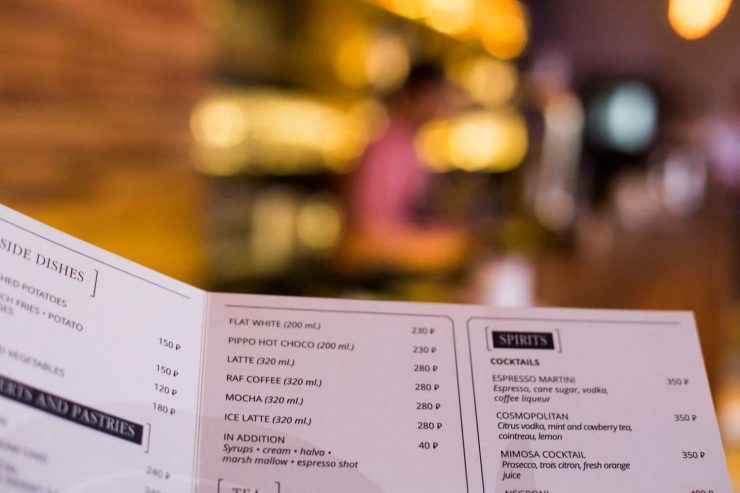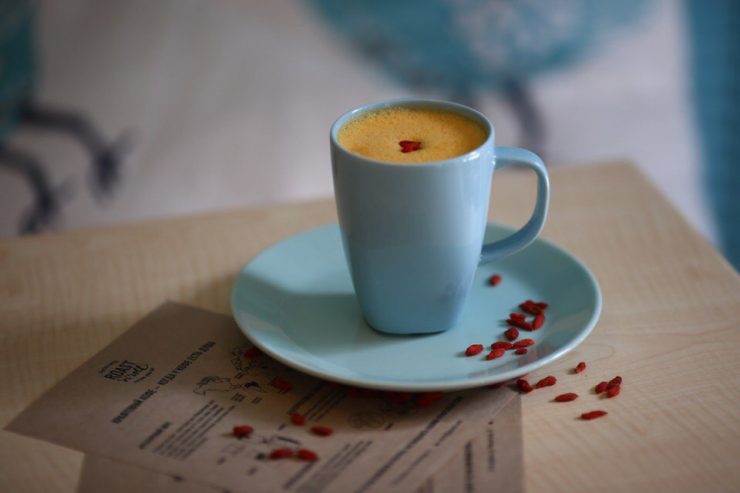
Back in the mid ’90s, long before anything called Third Wave coffee had arrived in Russia, one coffee drinker’s casual whim gave birth to one of Russia’s most popular drinks.
A regular at Coffee Bean, a shop which would later expand across several regions within Russia, Rafael Timerbaev preferred his coffee with milk. So, on one of his visits—not realizing the glory this moment would portend—he simply asked for a “good cup of coffee with milk.” The barista, rising to the occasion of this open-ended request, mixed a shot of espresso with cream and sugar, and steamed it all together. What would follow is now the stuff of Russian coffee legend.
The drink became a habit for Timerbaev, and soon his friends flocked to the same Coffee Bean to try the famous drink, asking the baristas, “Make that very drink you made for Rafael!” Or just “Raf.” One by one, they fell in love with it at first sip. Or maybe second. Rather than continue to offer the off-the-list concoction at a random price every time—all that cream and sugar adds up—the managers simply added it to the real menu, where it became known as the Raf.

Timberbaev is modest about the tribute. “As it’s widely known, I wasn’t in any way involved in creating the drink. Neither do I remember the author of the recipe. There are several widespread versions, but I won’t be able to confirm any of them.”
A story well worth a detective plot. Well, let us leave the mystery unraveled—it only lends the drink the added glimmer of legend. Today, any coffee geek will expect to see a Raf (or “Raf-Coffee” as it’s also called) in any specialty coffee shop around Russia.
The cradle of this fame, the very first Coffee Bean location to make a Raf, unfortunately, closed a couple of years ago, so I went to a less historic spot, with quite a historic person working there—barista trainer Tatyana Gulyaeva, a part of the Coffee Bean team for 15 years.

According to Gulyaeva, the original recipe was a shot of espresso, two tablespoons of sugar, and a splash of cream, all steamed in a cup. But it didn’t stay the same for long: Coffee Bean baristas, seduced by a vanilla sugar jar at the bar, dared to add it to the drink along with the regular sugar. This drink was overwhelmingly sweet—three tablespoons of sugar were simply too many. However, everybody agreed on the vanilla twist, and eventually the now-classic formula was born: one shot of espresso, cream, one tablespoon of plain sugar, and one tablespoon of vanilla sugar. It’s prepared nowadays by either steaming in a cup or a pitcher—I found the cup-steamed Raf lacked the intricate, fine-structured, glossy foam of its pitcher-prepared counterpart.
The surface is so silky that it seems a feather dropped atop it would simply glide away. But even though its now-canonical recipe is such a hit, it’s also become a basis for Russian coffee inspiration. The Raf’s neutral formula is a springboard to creativity. Syrups, spices, herbs—the alchemy of a Raf tolerates just about everything.

Sme of the raf twists have an army of fans. One of them is a Lavender Raf, which owes its popularity to a Russian coffee chain Double B, which boasts locations all over Russia and even in the Czech Republic and Kazakhstan. Double B followers know that not only a woman is worth a romance-filled rhyme. Whenever someone posts a photo of a Lavender Raf to social media, someone will immediately respond with: “Lavender Raf, One Love” (don’t worry, this rhymes in Russian). It’s a saying first slipped from under the pen of Sergey Mitrofanov, a Double B barista and coffee hashtag trendsetter.
Sweet and glossy, different and comforting, whether you like it or not, the Raf is a drink with a story. And where there’s a history, there’s a future. Stay tuned to these pages for more on the Raf, the unofficial and mysterious national coffee drink of Russia.
Darya Afanasyeva is a coffee professional based in Moscow, where she blogs at Zerno.me. Read more Darya Afanasyeva on Sprudge.
With additional photos by Ksenia Zudinova.
The post Meet The Raf, Russia’s Favorite Coffee Drink appeared first on Sprudge.

